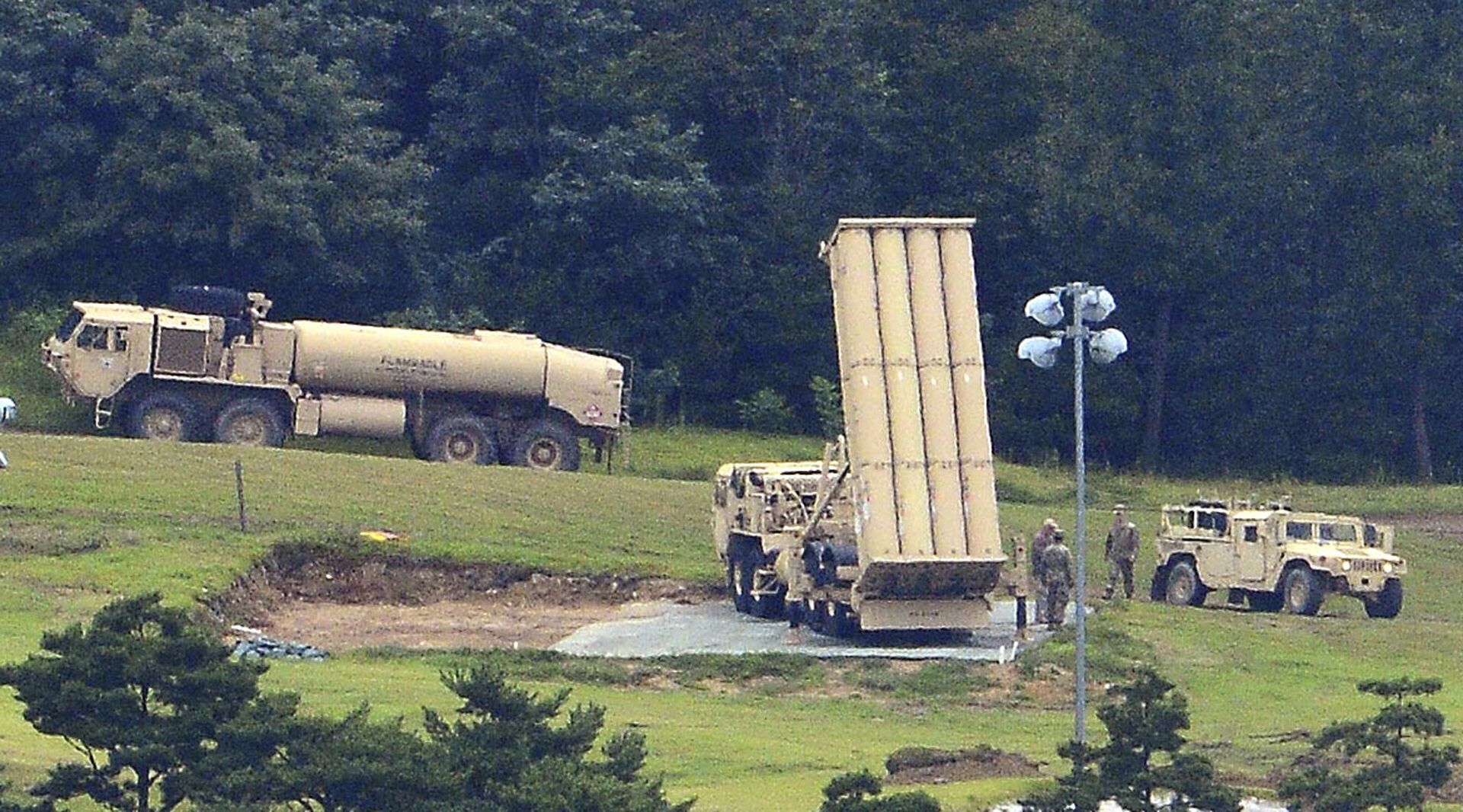What's THAAD and Why Might Israel Want Them?
11:58 GMT 13.10.2024 (Updated: 12:49 GMT 13.10.2024)

© Photo : US military
Subscribe
What do we know about the THAAD? Is it be the missile defense holy grail Israel is looking for to guard against further Iranian missile attacks? And what about Tel Aviv’s own much-vaunted missile defense equipment?
The United States is reportedly looking at deploying a THAAD missile defense system, along with the troops to operate it, on Israeli soil. A US defense official has told Sputnik that no final decision has been made on the matter.
Here's what to know about the sophisticated US weapons system:
Developed in the 1990s and Introduced into service with the US Army in 2008, the THAAD (‘Terminal High Altitude Area Defense’) is an anti-ballistic missile defense system designed to intercept and destroy short-, medium- and intermediate-range ballistic missiles in the reentry phase.
Developed by Lockheed Martin, THAAD is designed to destroy enemy projectiles using kinetic force alone, with its $12 mln apiece 900 kg, 6.17 m-long interceptors powered by a single-stage solid-fuel Pratt & Whitney Rocketdyne motor with thrust vectoring and the capability to accelerate to speeds up to Mach 8.2. The THAAD has a range between 150-200 km (including up to 150 km from the ground), and touts compatibility with other air and missile defense systems.
Each of the THAAD’s HEMTT-LHS launch vehicles carries eight interceptors, and along with launchers and a command & control vehicle, batteries feature a Raytheon AN/TPY-2 X-band search & track radar with a 1,000 km detection range. A single THAAD battery costs $800 mln, although the price for foreign clients has been known to top $1.13 billion.

THAAD launcher seen at a golf course in Seongju, South Korea, September 2017. File photo.
© AP Photo / Choo Sang-chul/Newsis
Promotional materials boast the THAAD’s superior lethality and hit-to-kill ratios, high firepower for sustained defense, and powerful radar. The system has proved successful in testing against 60s’ vintage SCUD-type missiles and US-made targeting test IRBMs.
But the THAAD’s combat use has proven a mixed bag, with the system reporting its first combat kill in January 2022 against a Houthi ballistic and cruise missile and drone barrage, but failing to intercept all enemy projectiles, which set infrastructure at Abu Dhabi’s airport on fire and destroyed three oil tankers near a military base hosting US, French and Emirati troops. Abu Dhabi’s possible dissatisfaction with the THAAD’s performance may have prompted it to purchase an undisclosed number of Rafael/Israel Aerospace Industries-made SPYDER short-to-medium range air defense systems from Israel.

24 September 2022, 12:55 GMT
THAADs are known to have been occasionally deployed in Israel by the US, but it’s not clear where the system was during Iran’s drone and missile attacks in April and October of this year, when multiple missiles penetrated defenses and reached their targets. The US has also deployed THAADs to South Korea and Romania amid tensions with Pyongyang and Moscow. The US military is known to operate 7-8 THAAD batteries, and along with the UAE, the system has also been purchased by Saudi Arabia.
Where Are Israel’s Own Missile Defenses?
At first glance, reports of US plans to deploy the THAAD in Israel seem to fly in the face of years of publicity about the capabilities of Israel’s own multilayered air and missile defense technology.
The newish Rafael/Raytheon David’s Sling, for example, features a similar terminal kinetic interceptor concept, a 250-300 km firing range, but only a 15 km max altitude. Its supermaneuverable kill vehicles accelerate to speeds up to Mach 7.5, and have a reported price of $1 mln apiece.
The Arrow family of ABMs includes the Arrow 2 and 3 interceptors, designed to shoot down short, medium and intermediate-range missiles, and featuring either kill vehicle or blast warhead, a 90-150 km (Arrow 2) to 2,400 km (Arrow 3) range, an exo-atmospheric flight ceiling, a Mach 9+ flight speed, and a price of $3.5 mln (Arrow 2) or $62 mln (Arrow 3).
📜ISRAEL'S AIR DEFENSE: A HIGH-TECH SHIELD THAT LEAKS LIKE A SIEVE
— Sputnik (@SputnikInt) October 3, 2024
On October 1, Iran fired around 200 ballistic missiles at Israel in retaliation for Israel’s killings of Hamas leader Ismail Haniyeh and Hezbollah secretary-general Hassan Nasrallah. Iran claims 90% hit their… pic.twitter.com/FYSuDakoKr
Arrows were reportedly deployed during the April and October Iranian strikes on Israel, with the David’s Sling reportedly used during the latter attack, with all three systems proving insufficient to stop Iranian missiles from getting through.
If anything, the US THAAD deployment would therefore be a symbolic display of continued American support for Israel – whose missile defenses proved overwhelmed by 200 Iranian ballistic missiles (out of an arsenal of thousands), despite the need to defend less than 22,000 sq. km – i.e. about the total land area of the state of New Jersey.

An image of Nevatim Airbase taken on Oct. 2 shows damage to a hangar and a taxiway caused by Iranian missile strikes.
© Photo : Planet Labs PBC



